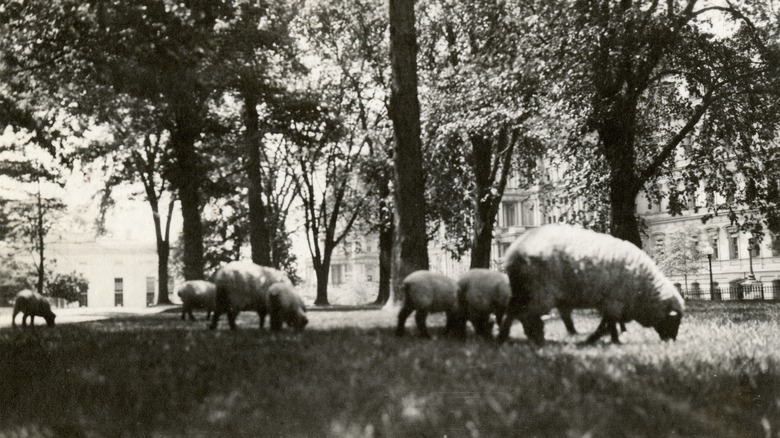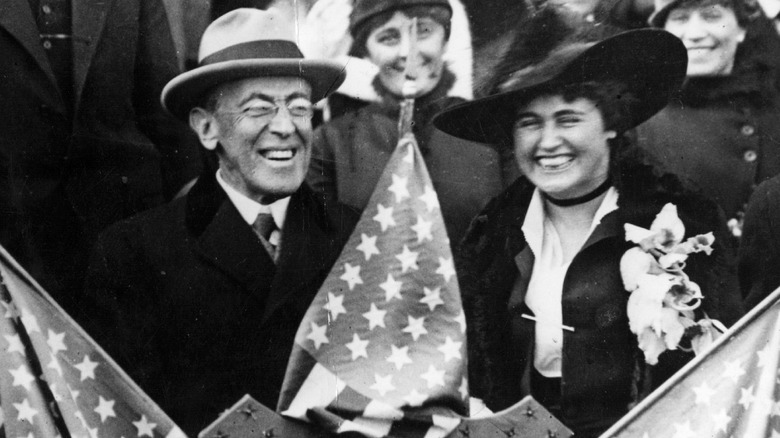The Odd Reason Woodrow Wilson Kept A Flock Of Sheep On The White House Lawn
The White House lawn has a long and storied history when it comes to animals. Second United States President John Adams was actually the first president to live in the White House, moving in four months before the end of his term in 1800. He brought with him several animals, including an assortment of mixed-breed dogs that were much beloved by Adams and his wife, Abigail, and could be seen running on the lawn. Years later, Dwight D. Eisenhower had a very different experience with animals on the White House lawn when he entered into a feud with the squirrels that had made the lawn their home during the presidency of Ike's predecessor and noted squirrel fanatic Harry S. Truman. Eisenhower enjoyed golfing on the lawn and the squirrels did what squirrels do and buried acorns throughout the putting green, and so the squirrels were rehomed to nearby Rock Creek Park.
In addition to these two presidential administrations' animals, were the sheep brought in to graze on the lawn during Woodrow Wilson's presidency. Wilson's friend Dr. Cary T. Grayson bought 12 sheep and four lambs from a farm in Bowie, Maryland on behalf of the president; the flock would eventually grow to number 48. Wilson governed during World War I and per DCist, the herd of sheep not only kept the lawn's grass trim, saving on expensive gardening human effort, wool sheared from the flock was auctioned off to benefit the Red Cross war fund, bringing in over $50,000.
The White House sheep were part of the World War I war effort
The sheep were just one way in which President Woodrow Wilson and his wife, First Lady Edith Wilson, showed fellow Americans that they, too, were practicing rationing in support of the war effort. According to The White House Historical Association, the White House also observed "wheatless Mondays" and "meatless Tuesdays," the Wilsons sometimes rode in a horse-drawn carriage to save fuel, and Edith knit and sewed clothes for soldiers and volunteered with the Red Cross in the Union Station train hub.
Unfortunately, the White House lawn wasn't actually an ideal home for the flock. Per DCist, a 1918 article in the Washington Post reported that the ever-growing presence of cars in Washington, D.C. were scaring the sheep and they were often sick with pneumonia and "the dips." They also went too far in their grass-trimming duties, tearing up the entire back lawn and necessitating a move to the front lawn where flowers and trees were fenced in to keep the sheep from devouring them. After three years, the flock was sold off in August of 1920. The legacy of the White House sheep is preserved in the Woodrow Wilson Presidential Library & Museum of Staunton, Virginia. West Virginia engineer JP Brunschwyler bid on some wool as part of a group and saved in it a safety deposit box where it stayed for 100 years. His daughter Judith Donakowski inherited the wool and donated it to the museum in 2018.

